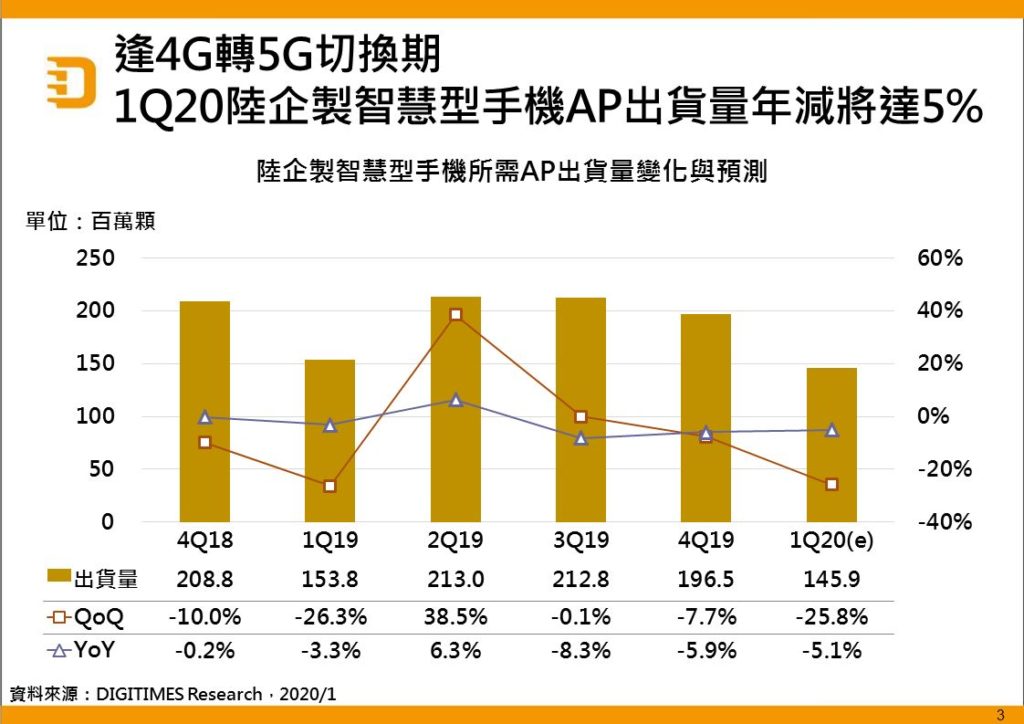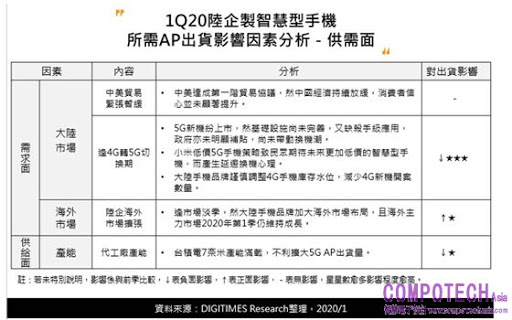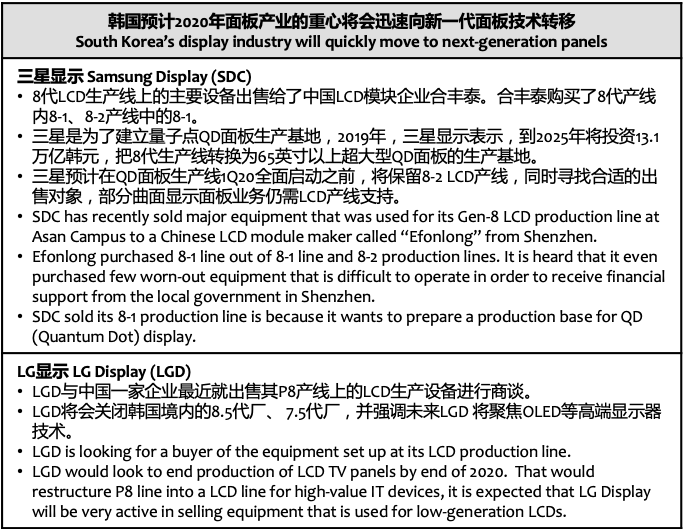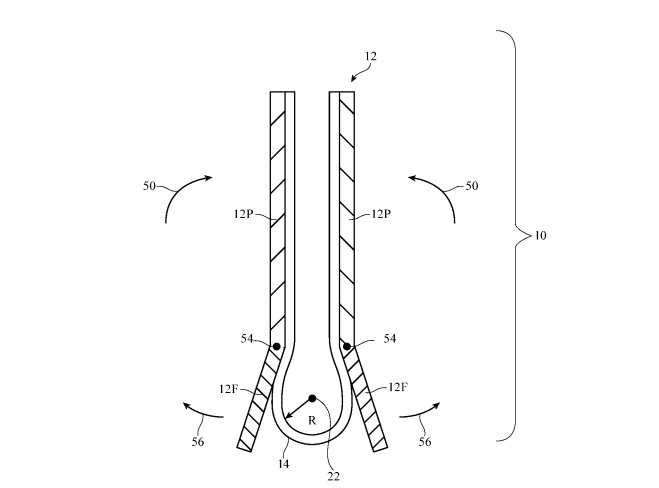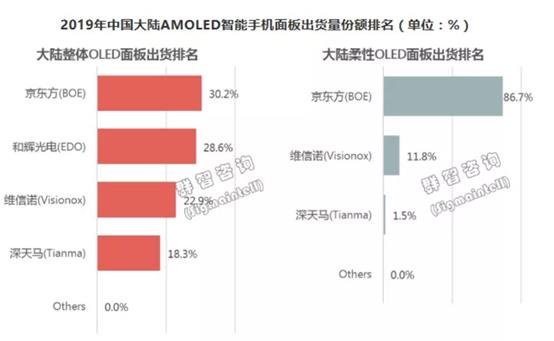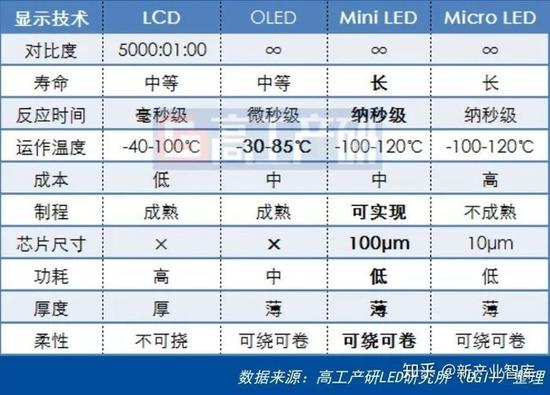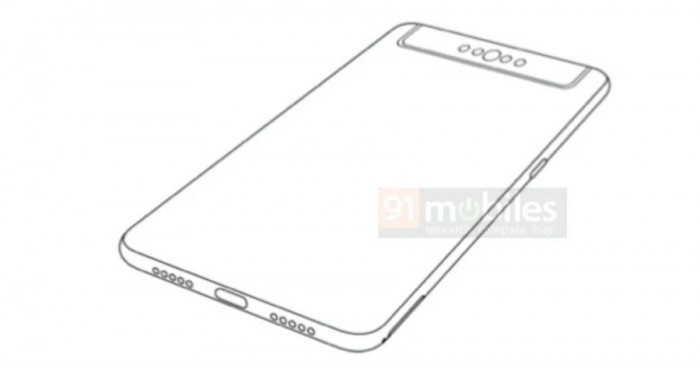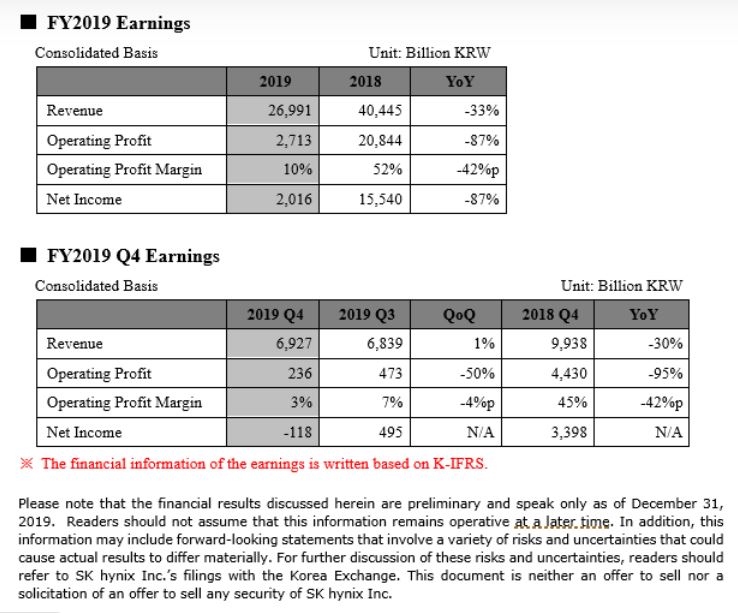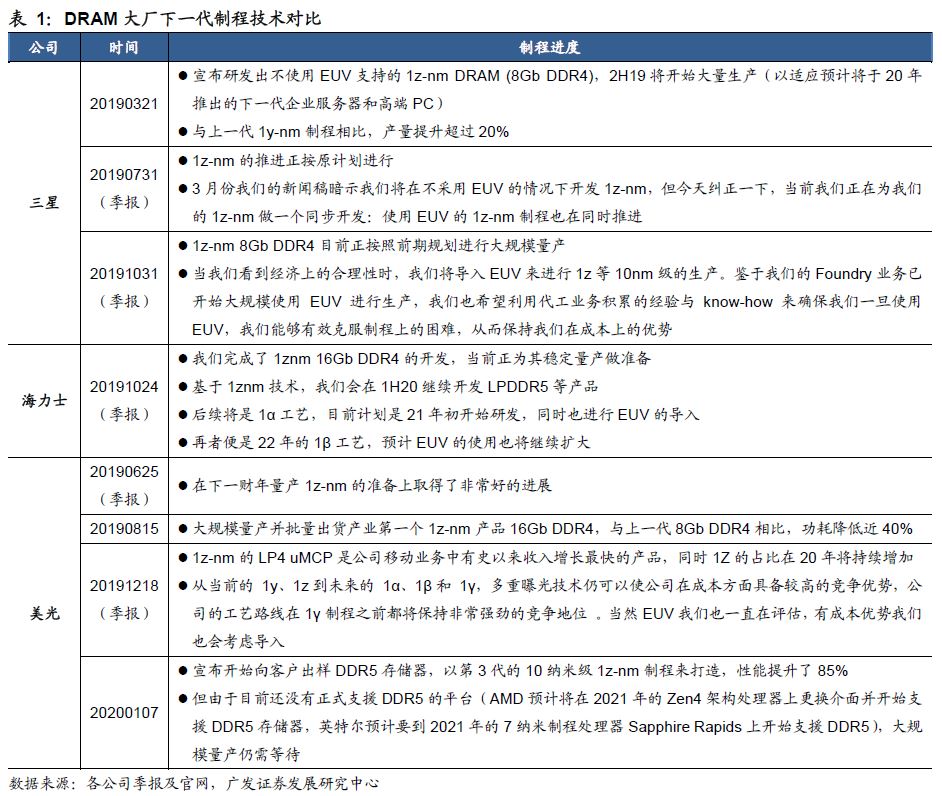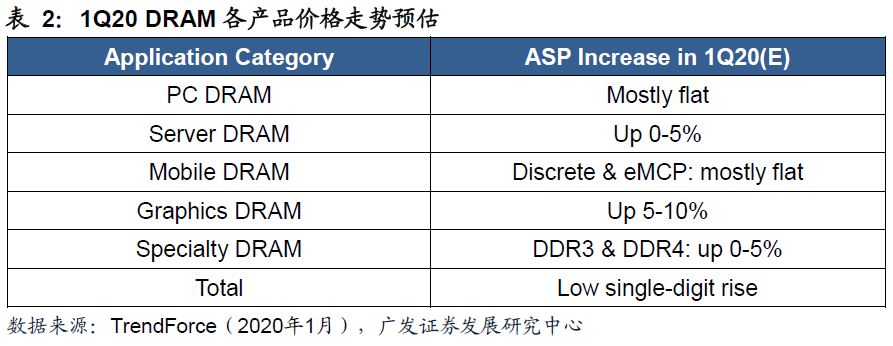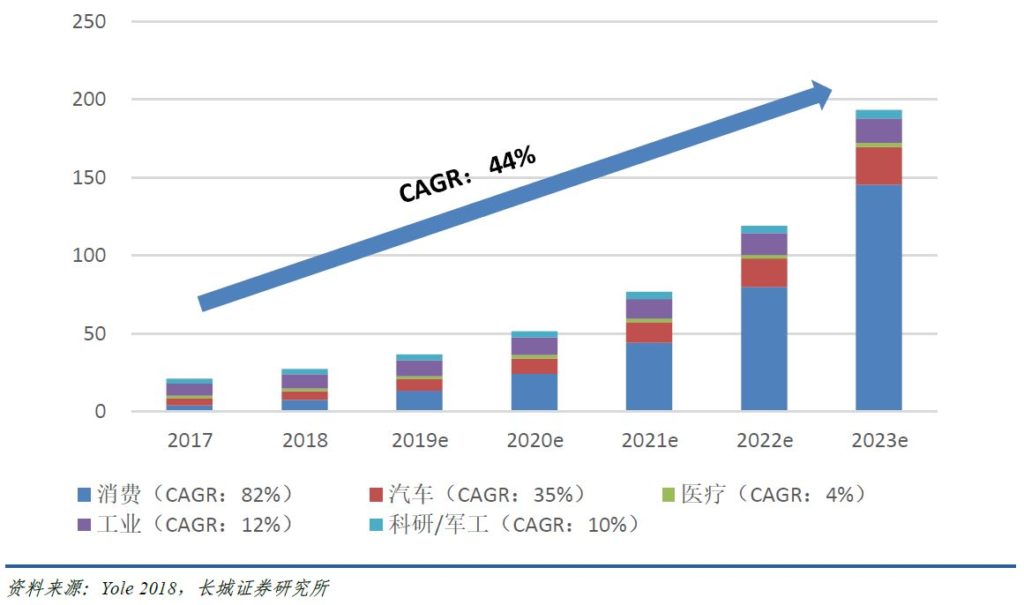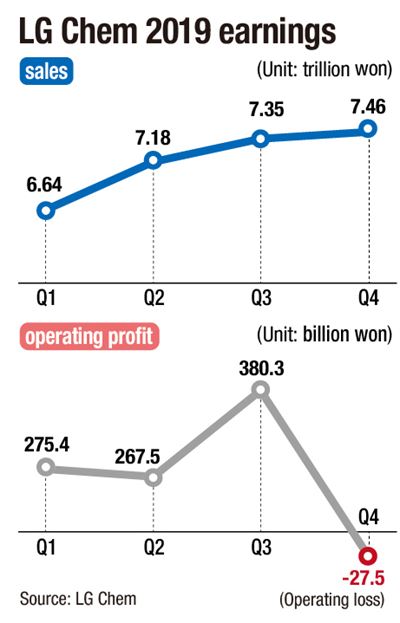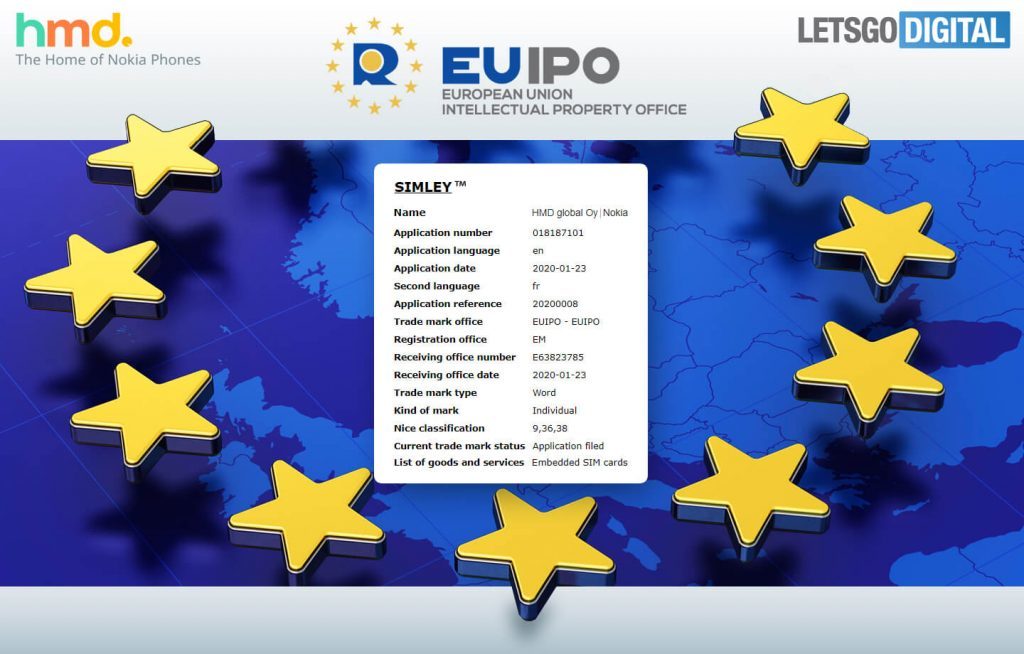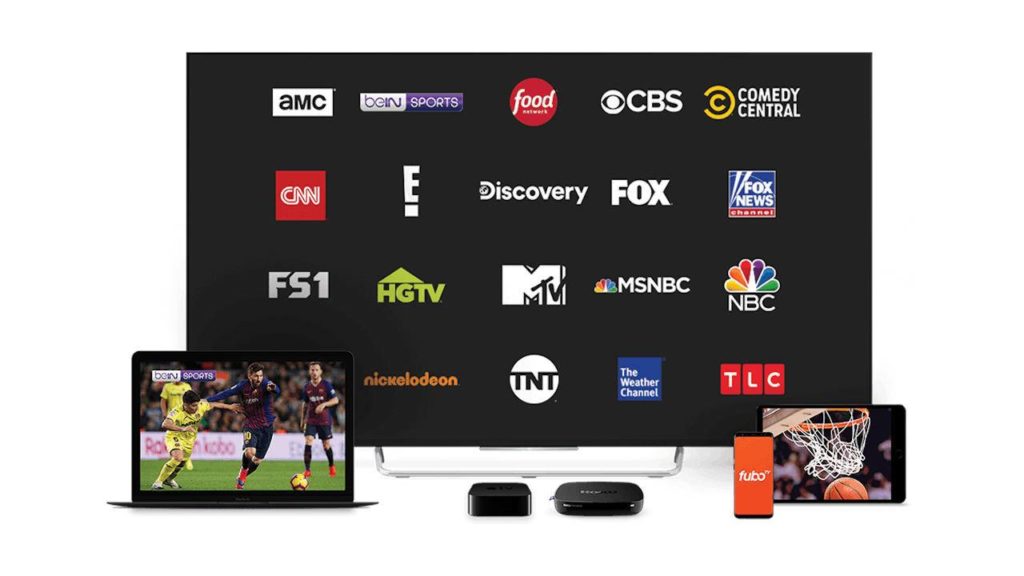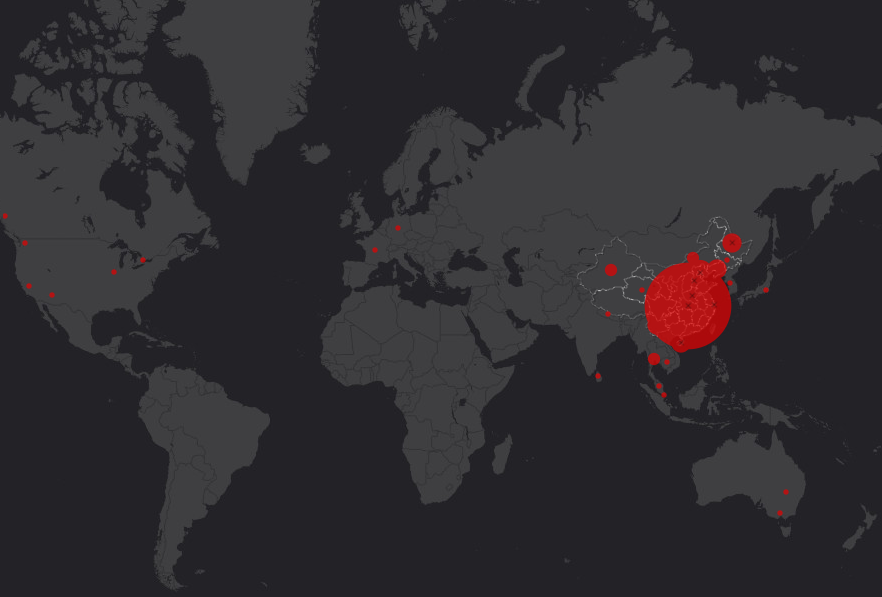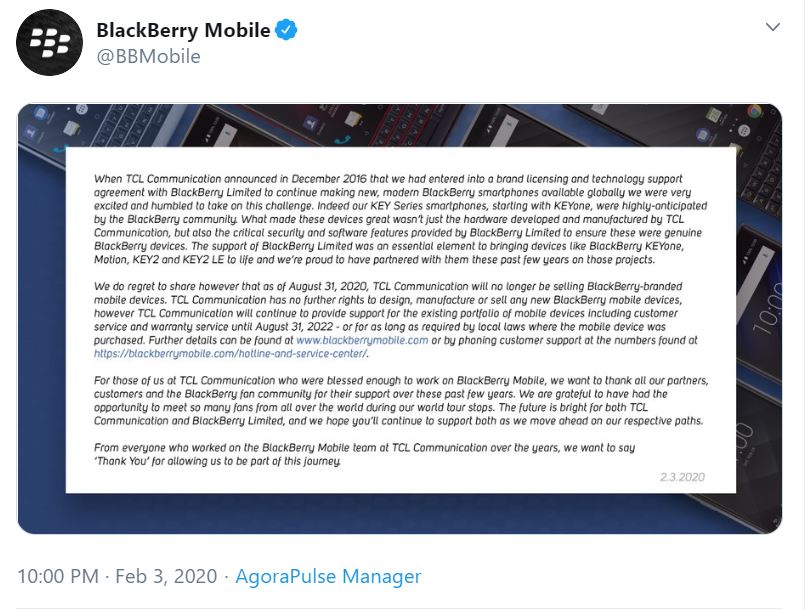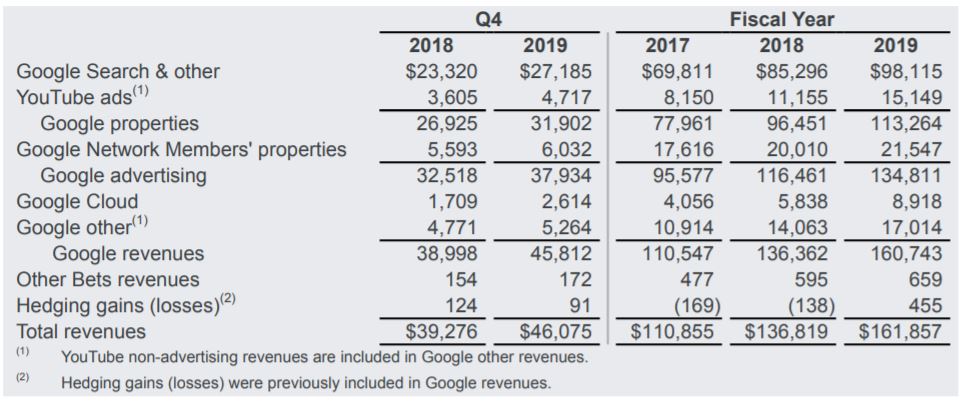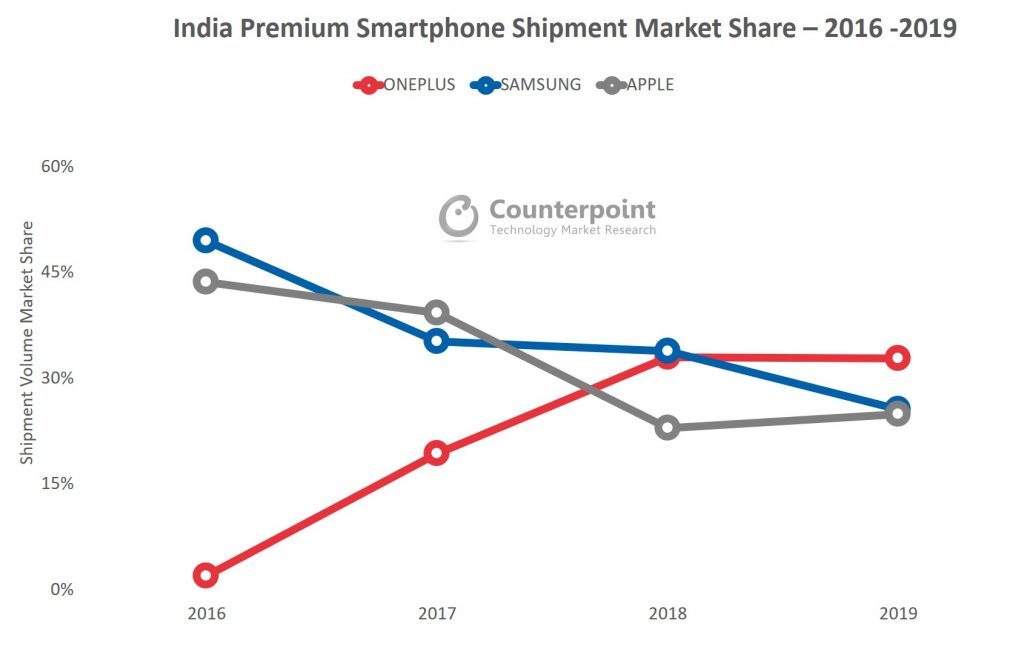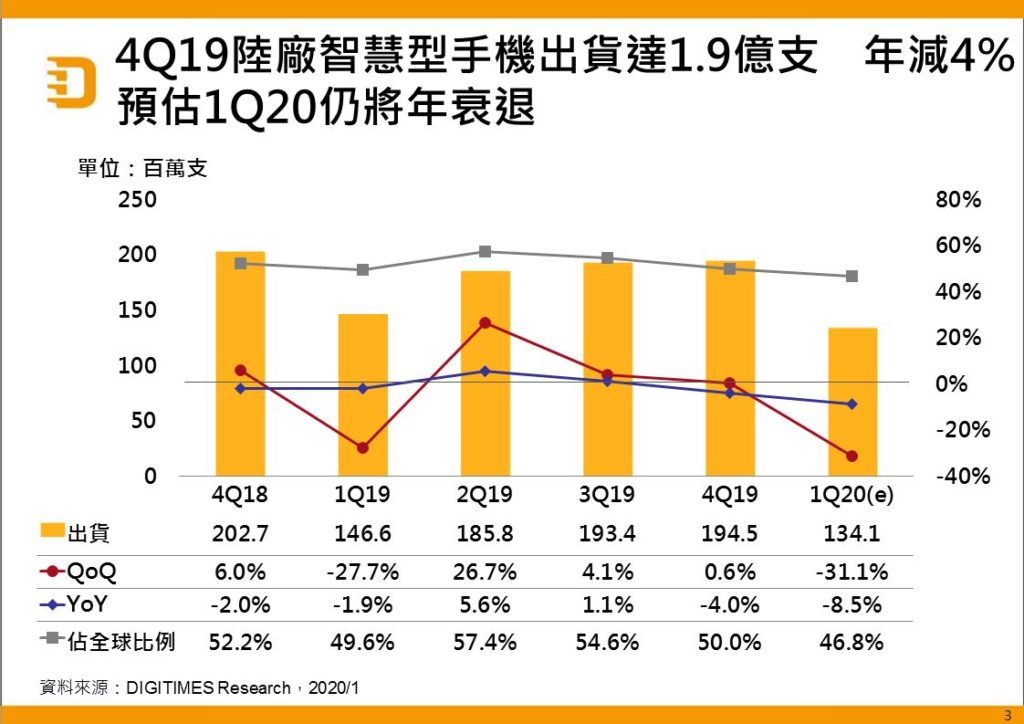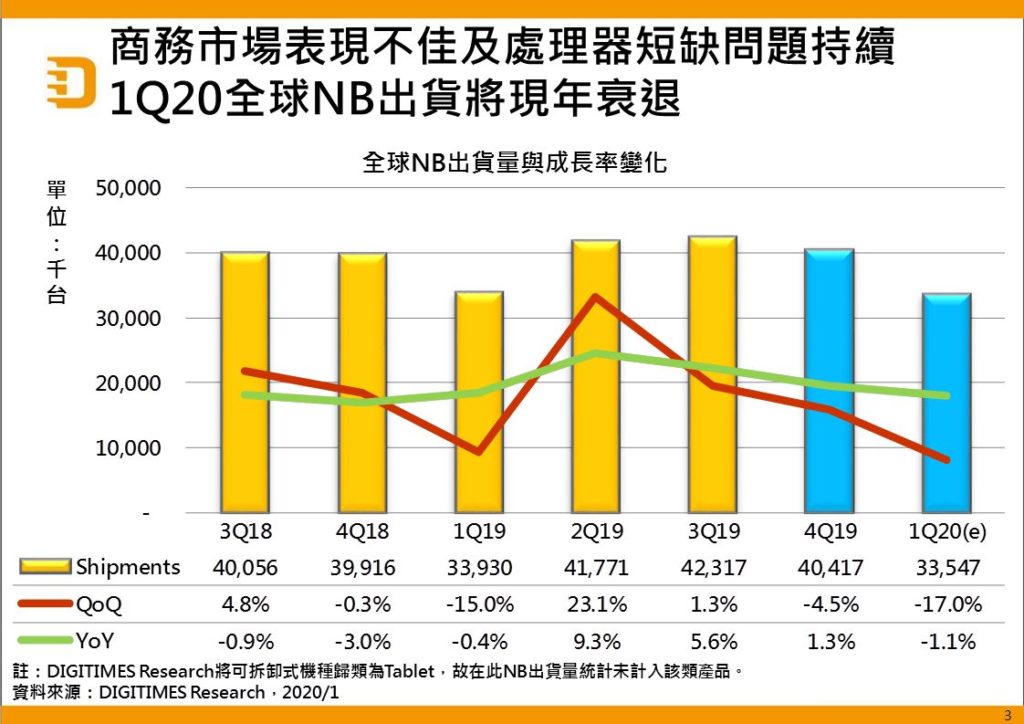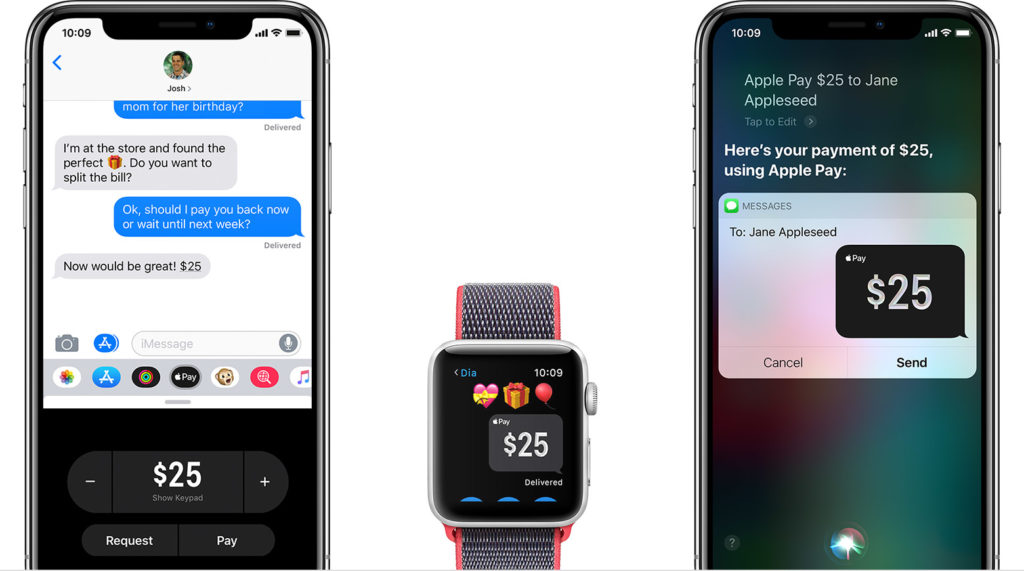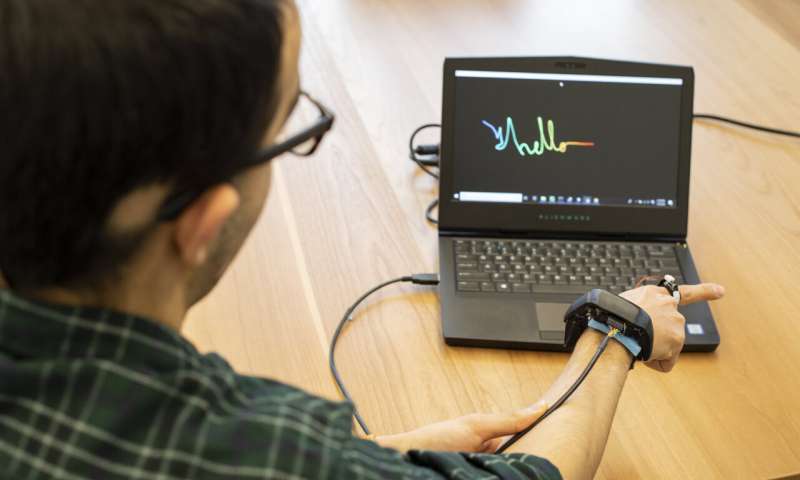
2-5 One Earth: Redmi will be the first brand to mass-produce 100W charging technology; TCL Communication has revealed they no longer have the rights to design, make or sell any future phones with the BlackBerry Mobile brand; etc.
Chipsets
Smartphone AP shipments in China reached a total of 197M units in the 4Q19, down 5.9% on year and 7.7% sequentially with volume for the whole year arriving at 776M units, down 3% on year. As smartphone brands were cautious about their AP inventory levels, their order pull-in in 4Q19 preparing for the Lunar New Year shopping was not very strong, according to Digitimes Research. Shipments in 1Q20 are estimated to drop to 146M units. (Digitimes, press, Digitimes)
Touch Display
Samsung and LG are allegedly planning on selling a major part of their respective production line that make LCD panels. The LCD business has an overall value of USD106B, Samsung and LG represent a stake worth about USD33B. (Gizmo China, WCCFTech, Sina, ZOL, HDAV China)
Apple’s patent titled “Electronic devices with flexible displays and hinges” suggests the design of a mobile device that includes a flexible display within a foldable housing. At its core is the concept of allowing a flexible display to be bent sufficiently enough to make the device fold in half, but to do so in such a way that it protects the display. (Apple Insider, USPTO, CN Beta)
According to Sigmaintell, the global flexible AMOLED smartphone panel shipments were approximately 180M units. This is a year-on-year increase of 6.2%. Samsung Display, BOE, and LG Display are the top 3 smartphone panel makers in the world. In the AMOLED market in mainland China, BOE ranks first with a 30.2% share. In the flexible screen AMOLED market, BOE has an absolute advantage with a market share of 87.6%. (Sigmaintell, press, GizChina, Laoyaoba, My Drivers)
Demand for mini LED applications is taking off, according to David Su, chairman and CEO for vertically-integrated LED firm Lextar Electronics. For mini LED backlighting, design is evolving to the third generation. (Digitimes, press, UDN)
Camera
Meizu has filed a design patent with the State Intellectual Property Office (SIPO) in China. The patent shows a circular camera module, which has 4 lenses that are arranged symmetrically with an LED flash at the center. (GizChina, Gizmo China, My Drivers)
A Xiaomi patent with a flip camera design shows that the camera module on the back of the phone can be folded to the front. This smartphone shows a solution that does not need a notch or punch-hole. (GizChina, IT Home)
Memory
In order to respond to changing market conditions, SK hynix cut capex by 25% in 2019 to KRW12.7T and said it would further cut investment in 2020, citing uncertainties despite robust demand. SK hynix says that the share of DRAM it makes using its 2nd Generation 10nm-class fabrication process (1Ynm) will increase to 40% by the end of 2020. On the NAND side of things, over half of NAND bits the company produces will be made using its 96-layer 3D NAND technology already in 1H20. (CN Beta, AnandTech, NY Times, Reuters, SK Hynix)
According to GF Securities, Micron believes that from the current 1y, 1z to the future 1α, 1β, and 1γ, the multiple technology can still give it a high competitive advantage in terms of cost, so the company will remain very strong before the 1γ process. As for EUV, the company believes that unless there is a cost advantage, it will not consider importing for the time being (compared to Samsung and SK hynix may introduce EUV in 2020/21). Based on the above information, Micron’s 1znm process has improved significantly compared to its peers. It is speculated that its technological progress or substantial progress has been made, and the company’s mid- and long-term competitive advantage may gradually emerge. (GF Securities report)
As the spot price of DRAM continued to rise in the past month and a power outage occurred at the Samsung plant in Korea on 31 Dec 2019, although the overall memory supply has not been significantly affected by the incident, buyers of various categories of products’ willingness to stock up has further strengthened, and TrendForce has also adjusted the 1Q20 DRAM contract price forecast from the original “roughly flat” to a “slightly increase”, and the price is positive. (GF Securities report)
Sensory
University of Washington has created AuraRing, a ring and wristband combination that can detect the precise location of someone’s index finger and continuously track hand movements. The ring emits a signal that can be picked up on the wristband, which can then identify the position and orientation of the ring—and the finger it is attached to. (VentureBeat, TechXplore)
According to Yole, the global 3D sensor market size has a CAGR of 44% from 2017 to 2023, of which the CAGR of consumer and automobile is 82% and 35%, respectively. Consumer and automobile will become the largest driver of the 3D sensing market. Judging by the shipments and penetration rates of mobile phones and car cameras, Great Wall Securities estimates that 3D sensing module shipments will total approximately 355M units in 2020, corresponding to a market size of approximately USD5.55B. (Great Wall Securities report)
Battery
Redmi general manager Lu Weibing has indicated that Redmi will be the first brand to mass-produce 100W charging technology. He has claimed that it can fully charge 4,000mAh battery in just 17 minutes. (CN Beta, IT Home, Sina, Gizmo China)
LG Chem finance chief Cha Dong-seok has revealed that LG Chem is in discussions to eventually spin off its battery unit in an effort to boost overall corporate competitiveness. LG Chem’s investment in batteries so far amounts to more than KRW10T. For 2020, the company expected its total capital expenditure will reach some KRW6T and half of it will go to the battery business. (Laoyaoba, Korea Times, Korea Herald)
Members of the European Parliament voted by 582-40 for a resolution urging the European Commission, which drafts EU laws, to ensure that EU consumers are no longer obliged to buy new chargers with each new device. (My Drivers, Mac Rumors, TechRadar, Europa, Reuters)
Connectivity
HMD has filed a patent for a new embedded SIM card (eSIM) solution with the European Union Intellectual Property Office (EUIPO). It is called SIMLEY and will serve a multitude of purposes ranging from telecommunication services to an e-wallet and banking service tool as well as an extended warranty service. (GSM Arena, LetsGoDigital, Europa)
Nokia has announced the launch of its Nokia Network Operations Master, a tool aimed at communication service providers (CSPs) to help manage complex 5G networks. According to Nokia, network management systems for 2G, 3G, and 4G network have largely been manually operated but now these tools cannot scale for the needs of 5G. (Neowin, Nokia)
T-Mobile and Sprint are rolling out number-verification to customers across both networks. Using the STIR / SHAKEN standards recommended by the FCC, the carriers hope to better fight robocalls. (Phone Arena, T-Mobile, Engadget)
Google Fiber has announced it discontinues its traditional TV service from its bundle. In place of traditional TV, Google Fiber will be offering sign-up opportunities with YouTube TV and, new to the service, fuboTV, the latter promising 35,000 live sporting events each year. (CN Beta, SlashGear, Forbes, 9to5Google, Google)
Huawei’s top executive for Europe Abraham Liu has revealed that the company would set up manufacturing hubs in Europe, as it tries to fight off US pressure on EU nations to stop it from operating. (CN Beta, SCMP)
Phone
According to Strategic Analytics, the outbreak of novel coronavirus (in Wuhan) will hit the China and global economy during 1H20. The smartphone market will be adversely impacted by the slowing GDP growth and the plunging consumer spending. It will also impact global smartphone supply and manufacturing, because China makes 70% of all smartphones sold on the planet. Any delay of operations for factories, by quarantine or travel restriction, will inevitably cause temporary labor-supply shortage. They forecast the global market will ship 2% fewer smartphones than expected in 2020, China smartphone shipments will be 5% less than expected in 2020. (Gizmo China, Strategy Analytics, CN Beta)
TCL Communication has revealed they no longer have the rights to design, make or sell any future phones with the BlackBerry Mobile brand. Sales of existing TCL-made BlackBerry phones will end on 31 Aug 2020. Support for those phones, including customer and warranty support, will continue until 31 Aug 2022. (TechCrunch, Android Authority, Engadget, CN Beta)
Google’s parent company Alphabet has announced its 4Q19 earnings with USD46.075B. Revenue is up 17% from USD39.27B in 4Q18, with operating income at USD9.27B and net income of USD10.67B for 4Q19. YouTube ad revenue at USD15.15B for 2019 — up from USD11.16B in 2018. “Google other revenues” — which includes hardware, Play Store, and non-advertising YouTube revenues — reported USD5.26B. (The Verge, 9to5Google, VentureBeat, Market Watch, Business Insider, Alphabet, CN Beta)
According to Counterpoint Research, India’s smartphone shipments in the premium segment (≥INR30,000 or roughly ≥USD420 retail price) grew 29% YoY to reach a record high in 2019. The availability of affordable premium smartphones, aggressive offers like significant price cuts, and user upgrades were the main reasons for the growth. In 2019, OnePlus is the number one premium brand. Its shipments grew 28% YoY and captured 1/3 of India’s premium segment. (My Drivers, Counterpoint Research)
Shin Jae-suk, team lead at LG Electronics’ Mobile Communication Business has indicated that the company plans on focusing on different strategies for different region. In Korea, LG will focus its next-in-line – the so-called ‘mass premium’ smartphones. LG plans to absorb as much 5G demand as it can from markets like US, Japan, Korea and Europe where Apple and Chinese smartphones have relatively smaller access. ODM models are being avidly considered for the mid and low-tier models. For 2020, LG is looking to go ODM for 20M-34M handsets it aims to produce. (GSM Arena, The Elec)
China-based handset makers shipped a total of 194M smartphones worldwide in 4Q19, up 0.6% on quarter but down 4% on year, Digitimes Research has found. Smartphone shipments from Chinese vendors will continue to fall on a yearly basis in 1Q20 as the local economy and job market in China will remain weak and the replacement demand for 5G models has yet to emerge. (Digitimes, press, Digitimes)
POCO X2 is announced in India – 6.67” 1080×2400 FHD+ IPS 120Hz HDR10 2×HiD, Qualcomm Snapdragon 730G, rear quad 64MP-8MP ultrawide-2MP macro-2MP depth + front dual 20MP-2MP depth, 6+64 / 6+128 / 8+256GB, Android 10, side fingerprint scanner, 4500mAh 27W, INR15,999 (USD225) / INR16,999 (USD240) / INR19,999 (USD280). (GSM Arena, CN Beta)
PC Tablet
Global notebook shipments were weaker-than-expected in 4Q19 due to Intel’s ongoing CPU shortages and major brands stopping stocking extra inventory in the wake of easing US-China trade tensions. However, annual shipments in 2019 still grew 4.1% on year, according to Digitimes Research. (Digitimes, press, Digitimes)
Automotive
Toyota has unveiled an emergency safety system that uses big data to ignore the accelerator if it determines the driver steps on the pedal unintentionally. Toyota will roll out what it calls an “accelerator suppression function” in new cars from summer 2020, beginning in Japan. (VentureBeat, SlashGear, Toyota, Auto News, Sina, My Drivers)
Payment
Apple is allegedly in negotiations with financial institutions in the Middle East to bring Apple Pay to Israel. (Mac Rumors, Calcalist)
